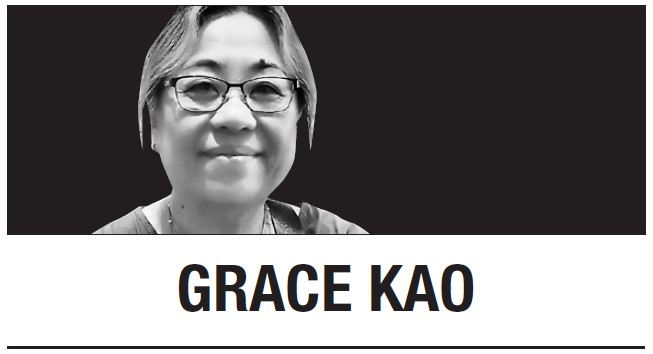
For the past four years, I’ve taught a first-year seminar titled “Race and Place in British New Wave, K-pop and Beyond” at Yale University. Since it’s the beginning of the Fall semester here, it seems like an appropriate time to share what my course is like.
At Yale, we have special seminars that are only open to our first-year students. These courses are introductory and offer unique content. First-year seminars give our newest students a chance to interact with other students from their cohort and their professor in a very intimate setting. Seminars are generally capped at 15 students. Sophomores, juniors and seniors are not eligible to enroll in these courses.
While my course sounds like a lot of fun – and it is -- it actually entails quite a bit of work for both the students and me. I assign a typical amount of readings for a lower-division course. However, they also have to watch about 25 music videos every week. Weekly essays on the playlists are due before our first class for the week along with reviews of our readings. I have compiled a playlist for each week of the course. They are arranged somewhat chronologically and thematically. Using popular music, starting with ska and reggae in Jamaica in the 1960s, we talk about issues of race and migration. While many of the ska, rocksteady and reggae musicians in Jamaica were Black (Dandy Livingstone, Jimmy Cliff, Desmond Dekker, Toots and the Maytals, etc.), the most well-known producers and record label executives included those of Chinese and West Indian descent (Leslie Kong, Byron Lee, Vincent and Pat Chin, Lee Gopthal and even Jo Jo Kim). Like Asian immigrants all over the world, they were more likely to be small entrepreneurs -- they owned small stores and later owned recording equipment.
Next, we cover the migration of Jamaican music to the UK in the late 1960s and 1970s, leading to second-wave ska groups such as The English Beat, Madness, The Specials and UB40. This genre is an important part of the British New Wave, represented by its grandfather, David Bowie, and iconic artists like Duran Duran, Spandau Ballet, New Order, Human League and so forth. These artists benefited from the advent of MTV in 1981, where its first broadcast began with the video for “Video Killed the Radio Star” by The Buggles. Because MTV was interested in visually-appealing artists, the outlandish clothing of the British New Wave artists suited them. Of course, MTV also actively promoted white artists over Black artists until Michael Jackson broke the racial barrier.
Through music, we learn about colonization (Jamaica by the UK), technology (dubplates, radio, color TV, electronic synthesizers), geography (Manchester sound as represented by Joy Division, New Order and The Buzzcocks), the migration of people and culture, race and the nation-state. We can discuss issues of race in studies of popular music. It’s easier to retain information when it’s interesting and you have fun learning the material. I regularly host a guest lecture from '80s pop star Dave Wakeling, leader of The English Beat and General Public.
Later in the semester we pivot to K-pop. I begin with artists before modern K-pop including songs such as “Come Back to Busan Port” by Cho Yong Pil, “Story of Last Night” by Sobangcha and of course “Nan Arayo” by Seo Taiji and Boys. Incidentally, there are reggae songs in the K-pop list, including “Excuses” (Pinggae) by Kim Gun Mo and “Cocktail Love” by Marronnier. After that, we talked about the entertainment companies, idol contracts, and the generations of groups starting with H.O.T. and S.E.S. all the way to fourth- and fifth-generation groups like Ive, Trendz and Zerobaseone.
Not all of my students are K-pop fans, though usually a few are familiar with new wave. This semester, I even have students who like The Beatles, Billy Joel, Elton John and genres like progressive rock – remember Genesis and Yes? Still, they all love music and recognize the importance of it in their lives. What they will learn is how it reflects society and manifests many of the dimensions of inequality we find in sociological studies.
Neo-Marxists have always been attentive to the importance of popular culture as a way for the elite to control the masses -- however, I think pop culture is a two-way street. In the world of K-pop, fans hold immense power and control over the content and behavior of idols, and consumers are not simply passive receivers of cultural products. For international fans, they are also learning about Hallyu, or the Korean Wave.
I am so fortunate to work with smart young students, and I learn about their views of contemporary society through the lens of popular music. They love interacting with other students, and that is exactly the learning environment afforded by small seminars. Hopefully, they will realize that music didn’t always come via YouTube and Spotify.
Having said that, readers are welcome to peruse my class playlists on YouTube by searching for SOCY 081:M1 (for Module 1) and then SOCY 081:M2, etc., all the way to SOCY 081:M14. These lists will be updated as the semester progresses.
Grace Kao
Grace Kao is an IBM professor of sociology and professor of ethnicity, race and migration at Yale University. The views expressed here are the writer’s own. -- Ed.





![[Herald Interview] How Gopizza got big in India](http://res.heraldm.com/phpwas/restmb_idxmake.php?idx=644&simg=/content/image/2024/11/20/20241120050057_0.jpg)

